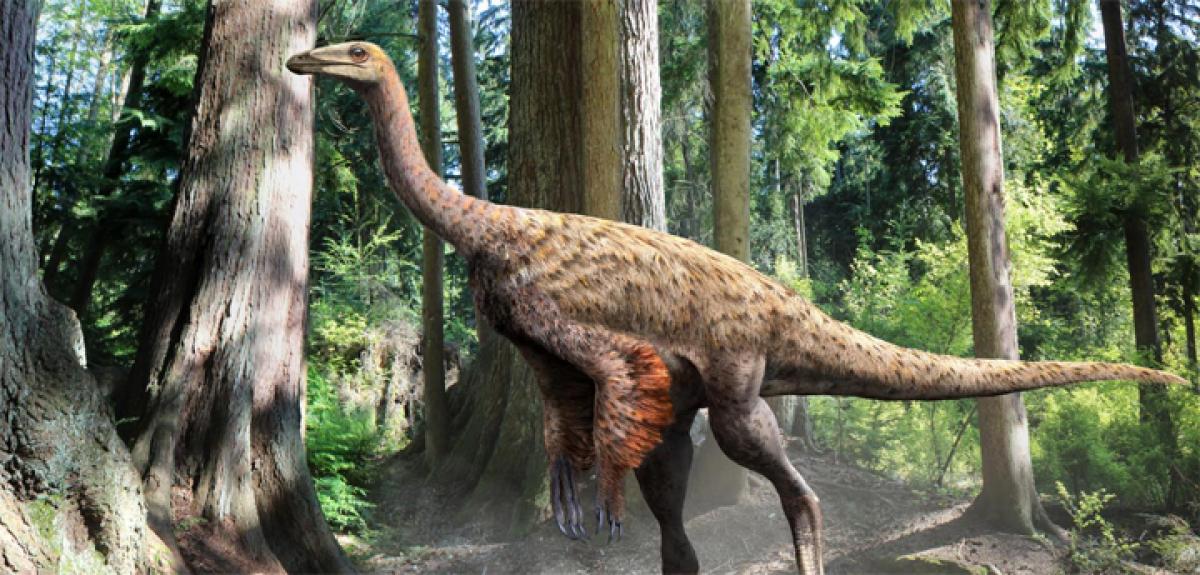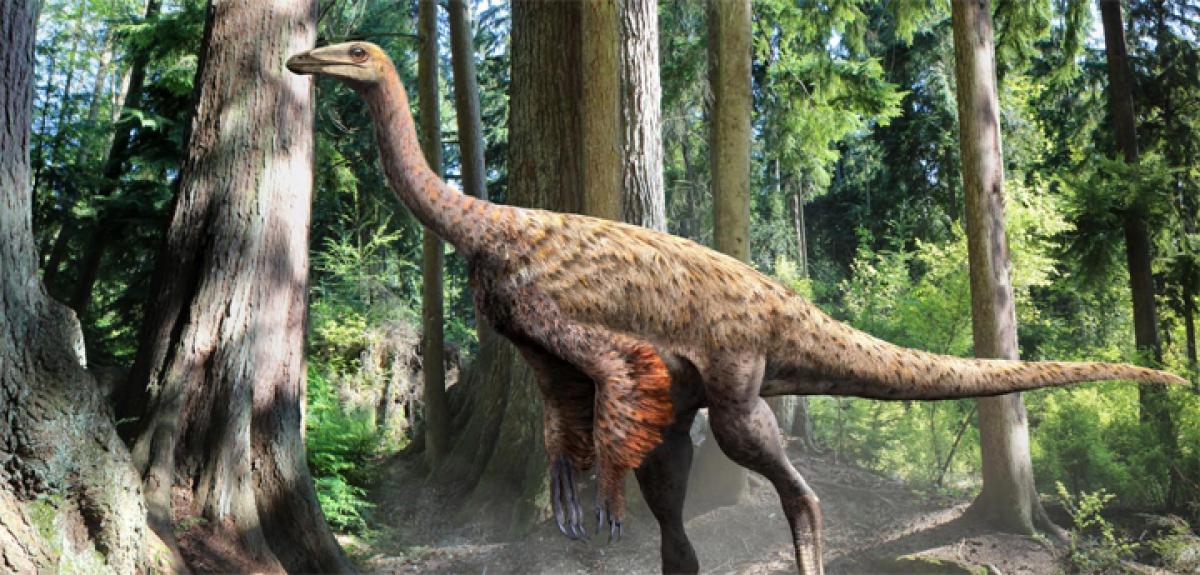Live
- SC parked Yogi’s bulldozer in garage forever: Akhilesh
- No ‘blame game’ over pollution issue: Mann
- 3 Odisha Police officers get ‘Dakshata’ award
- Punjab To Rebrand Aam Aadmi Clinics Following Central Funding Dispute
- First inscribed ‘Sati Shila’ of Odisha deciphered
- India-China Defence Ministers To Meet Following Historic LAC Disengagement Deal
- NBW against ex-BJD MP, 5 others in tribal murder case
- Combing operations on against Maoists, weapons recovered: HM
- Delhi's winter action plan: Govt to set up 250 tents for homeless individuals
- Naik reviews drinking water project
Just In

x
Highlights
Researchers in Canada have discovered fossilised remains of an ostrich-like dinosaur with preserved tail feathers and soft tissue, a finding that throws more light on the linkages between dinosaurs and modern birds. The discovery is shedding light on the convergent evolution of these dinosaurs with ostriches and emus relating to thermoregulation, researchers said.
Researchers in Canada have discovered fossilised remains of an ostrich-like dinosaur with preserved tail feathers and soft tissue, a finding that throws more light on the linkages between dinosaurs and modern birds. The discovery is shedding light on the convergent evolution of these dinosaurs with ostriches and emus relating to thermoregulation, researchers said.

"We now know what the plumage looked like on the tail, and that from the mid-femur down, it had bare skin," said Aaron van der Reest, University of Alberta undergraduate paleontology student. This is the first report of such preserved skin forming a web from the femoral shaft to the abdomen, never before seen in non-avian dinosaurs. "Ostriches use bare skin to thermoregulate. Because the plumage on this specimen is virtually identical to that of an ostrich, we can infer that Ornithomimus was likely doing the same thing, using feathered regions on their body to maintain body temperature. It would've looked a lot like an ostrich," said van der Reest.
"In fact, this group of animals - referred to as ornithomimids - is commonly referred to as "ostrich mimics," he said. Although the preserved feathers are extremely crushed due to sediment compaction, scanning electron microscopy shows a three-dimensional keratin structure to the feathers on the tail and body. This new specimen - one of only three feathered Ornithomimus specimens in the world - is shedding light on the animal's evolutionary adaptation to different environments.
"We are getting the newest information on what these animals may have looked like, how they maintained body temperatures, and the stages of feather evolution," said van der Reest, who was supervised by Philip Currie, Canada's leading paleontologist. The findings may be used to further understand why
animals have adapted the way they have and to predict how animals will have to adapt in the future in order to survive environmental changes, van der Reest noted.
"This specimen also tightens the linkages between dinosaurs and birds, in particular with respect to theropods," said Alex Wolfe, second author on the paper. "There are so many components of the morphology of this fossil as well as the chemistry of the feathers that are essentially indistinguishable from modern birds," said Wolfe. The discovery may also alter future excavation techniques, said van der Reest. "If we can better understand the processes behind the preservation of the feathers in this specimen, we can better predict whether other fossilised animals in the ground will have soft tissues, feathers, or skin impressions preserved," van der Reest added.
More On

Next Story
More Stories
ADVERTISEMENT
© 2024 Hyderabad Media House Limited/The Hans India. All rights reserved. Powered by hocalwire.com







